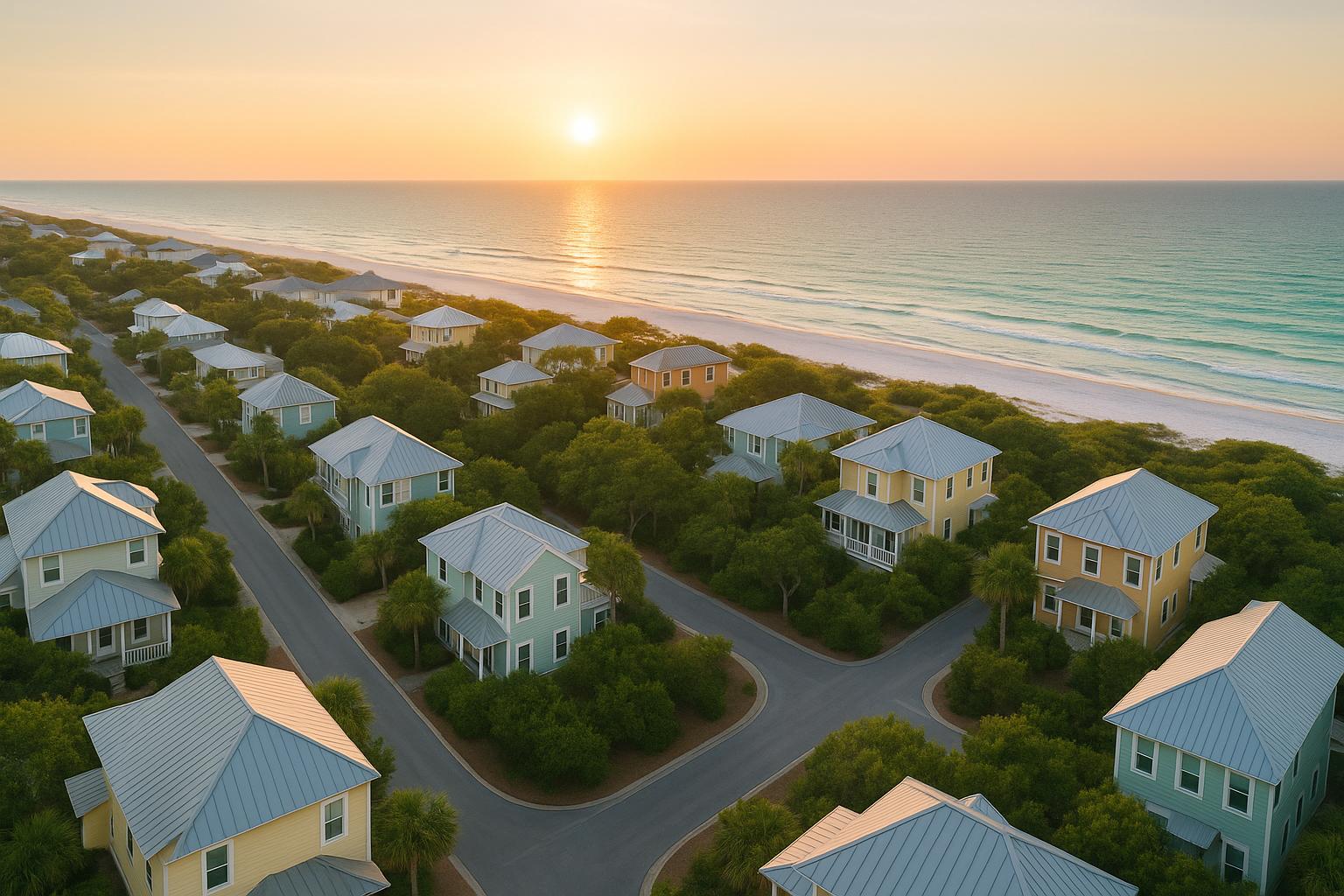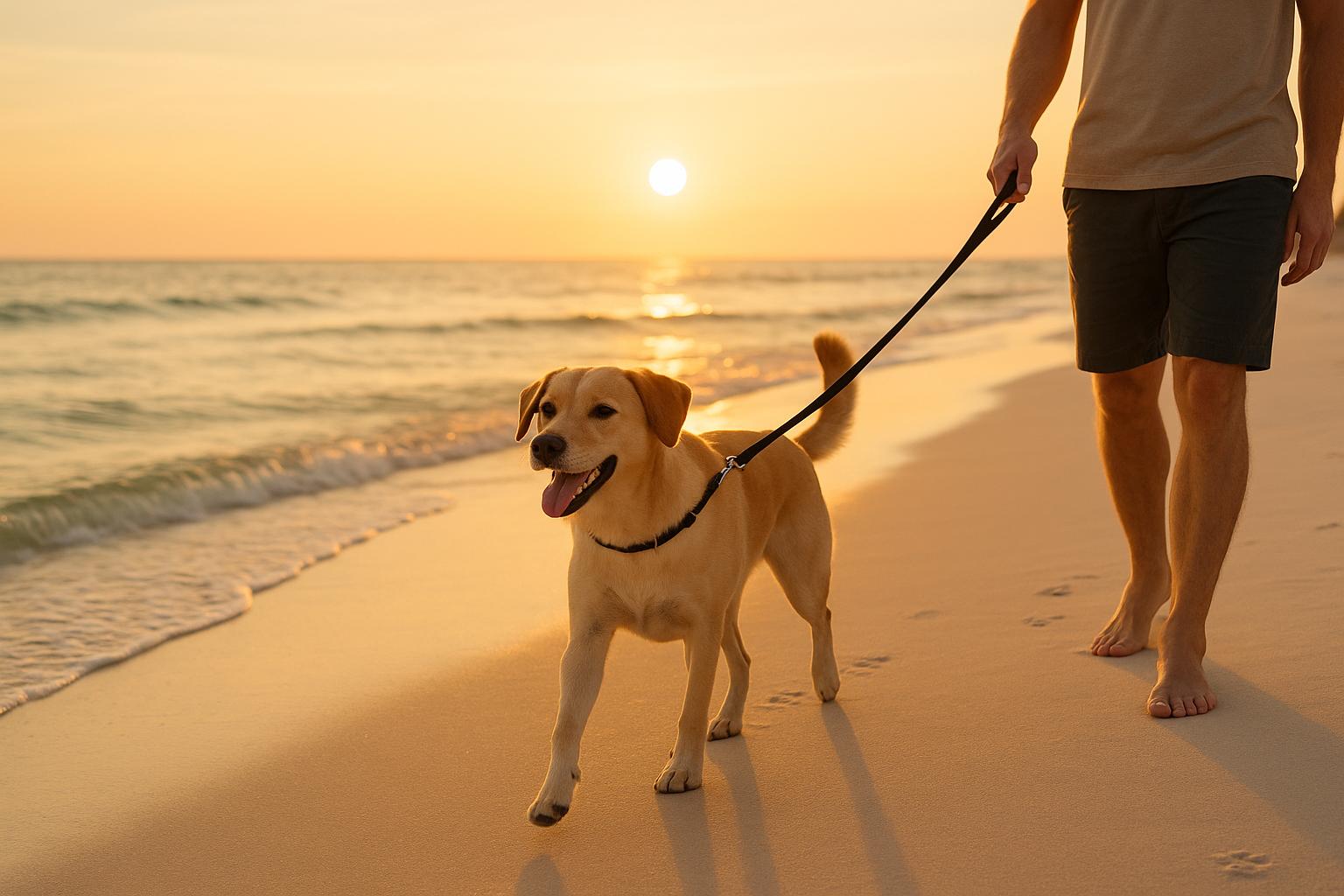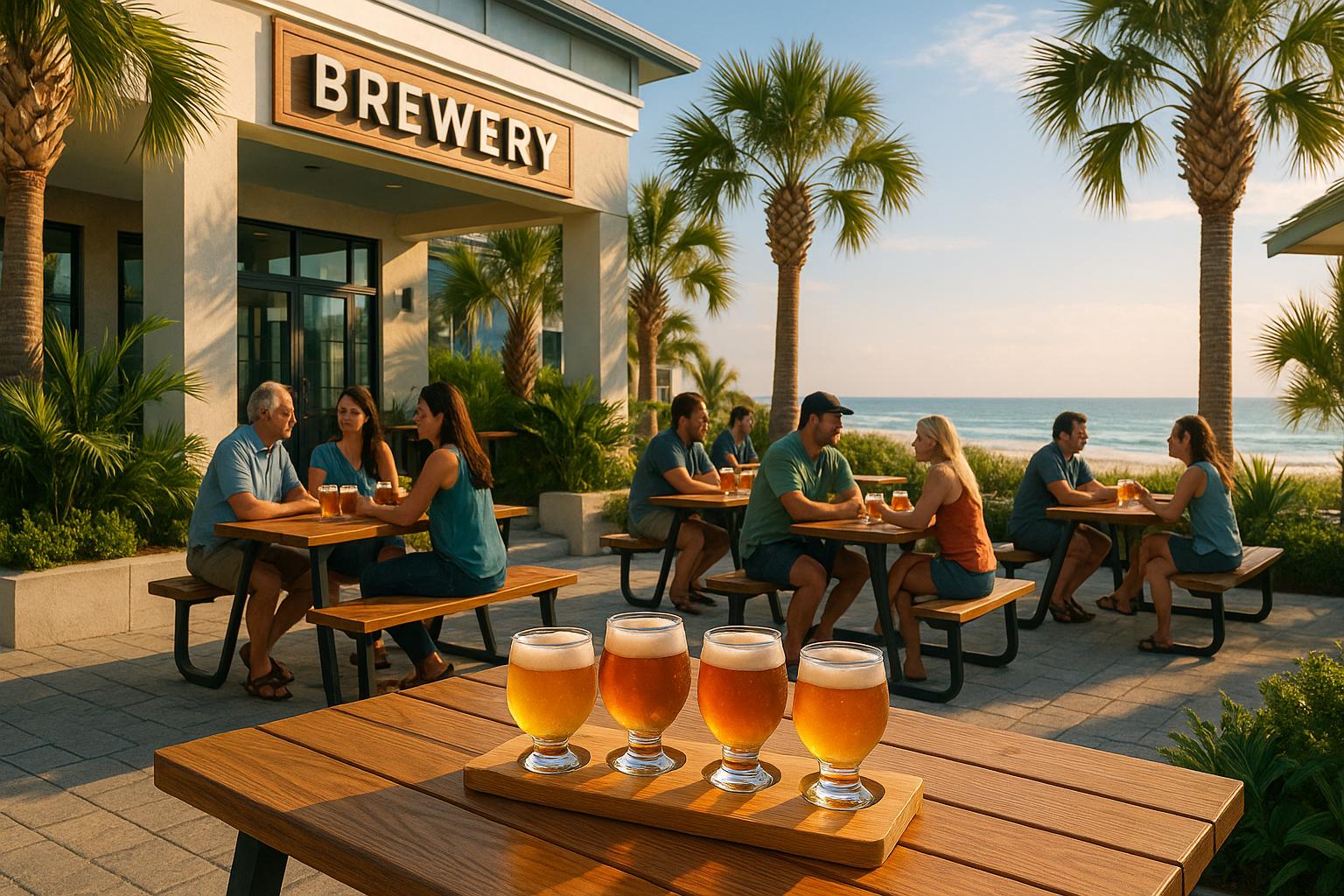South Walton, Florida, has transformed over two centuries from a modest farming settlement into a luxurious coastal destination along Scenic Highway 30A. The area’s roots trace back to 1820 when Neil McLendon established the first European-American settlement, supported by fertile inland valleys and cooperative relations with the indigenous Yuchi people. Today, the region thrives on tourism, with upscale communities like Seaside and Rosemary Beach drawing millions annually. However, this growth presents challenges such as rising property values, environmental concerns, and the need to preserve its historical legacy. South Walton’s story is one of balancing its agricultural past with its modern identity as a vibrant beach destination.
1. South Walton's Early Settlement Days
Lifestyle and Community
Back in the days of British West Florida (1763–1783), two distinct settler groups laid the groundwork for what would later become Walton County. In the north, Scottish pioneers from the Carolinas established themselves in the DeFuniak Springs area. Meanwhile, along the southern coast - covering areas now known as Santa Rosa Beach, Sandestin, Miramar Beach, Point Washington, and Seaside - English farmers and fishermen from regions like Norfolk, Dorset, and western Sussex made their homes. These communities thrived on self-reliance, with only minimal trade between them. The Euchee Valley, spanning about 25 miles, provided ample resources for raising livestock, and settlers maintained friendly relations with the indigenous Euchee (Yuchi) people. A notable figure, Chief Sam Story, who had both Yuchi and Scottish heritage, played a key role in these relationships. He managed a landing on the Choctawhatchee River and welcomed Neil McLendon's group of settlers in 1820, helping to establish a foundation for the region’s agricultural economy.
Economic Activities
In the spring of 1820, Neil McLendon's expedition highlighted the fertile lands around Bruce Creek, showcasing the valley's potential for diverse farming and livestock ventures. Word of these opportunities spread quickly, attracting more settlers from North and South Carolina. By 1824, Walton County’s 1,028-square-mile area had become a hub for farming and trade, with Eucheeanna as its first trading center. This settlement served as a crucial link between inland and coastal communities, setting economic patterns that are still reflected in the 30A corridor today.
Cultural and Historical Preservation
South Walton has embraced its rich history, preserving landmarks and traditions that connect the past to the present. For example, the Presbyterian church established by early settlers continues to stand as a testament to the community's origins. The church's historic cemetery offers visitors a tangible connection to the area's early days. The Euchee Valley itself honors the indigenous people who first welcomed European settlers, ensuring that their legacy remains a part of the region's identity. Historical associations document these stories, while archaeological discoveries, such as evidence of the Fort Walton Culture - a mound-building society from around 900 AD - add depth to the area's history. Although the town of Eucheeanna no longer exists visibly, its site near Bruce Creek remains a significant historical marker. For those eager to delve into this heritage, resources like sowal.co provide valuable insights, painting a vivid picture of South Walton's evolution from an agricultural hub to a lively coastal destination.
2. Today's Scenic 30A Destination
Lifestyle and Community
South Walton has transformed from a quiet farming region into the vibrant 30A corridor, blending laid-back beach vibes with thoughtful community design. It's a place where outdoor activities abound - whether you're biking along picturesque trails, paddleboarding on Western Lake, or browsing through local farmers markets, there's something for everyone to enjoy.
Communities like Seaside, Rosemary Beach, Alys Beach, and WaterColor are prime examples of modern coastal living. Seaside, established in the 1980s, was one of the first walkable, mixed-use developments in the U.S., setting a nationwide standard for urban planning. Each neighborhood offers its own unique charm: WaterColor caters to families with its resort-like amenities, while Alys Beach stands out with its striking architecture and European-inspired style.
Even with over 4 million visitors each year, 30A manages to keep its community-focused spirit alive. Events like the 30A Songwriters Festival and seasonal celebrations bring locals and tourists together, creating a sense of belonging. This welcoming atmosphere, combined with the rise of remote work, has encouraged more people to settle in the area year-round. As a result, the region has experienced a shift toward a tourism-driven economy, powered by its dynamic lifestyle.
Economic Activities
The economy along 30A has moved far beyond its roots in agriculture and fishing, evolving into a hub for tourism and hospitality. Vacation rentals here range from $200 to over $1,500 per night, and as of 2024, the median home price in many 30A communities has exceeded $1 million, reflecting its status as a luxury destination.
Local businesses have risen to meet the expectations of both affluent residents and discerning visitors. Take Pizza by the Sea, for example - it was named "Best Pizza in SoWal" and "Hottest Spot for Pizza on 30A" in 2025, showing how local establishments have earned their place in the spotlight. Dining options run the gamut from mid-range restaurants with entrées priced between $15 and $40 to high-end beachfront venues offering elevated culinary experiences.
Boutique shops and artisan services are thriving as well. Moon Creek Gallery in Grayton Beach features works from local and regional artists, while Black Bear Bread Co. has become a favorite gathering place for the community. Outdoor recreation remains a cornerstone of the area’s appeal, with businesses like Reel 30A offering deep-sea fishing charters that attract adventure seekers from near and far.
Cultural and Historical Preservation
Even with its rapid growth, 30A remains deeply committed to preserving its heritage and natural beauty. Grayton Beach State Park, an award-winning site, protects the area's pristine coastal ecosystems, while Western Lake - a rare coastal dune lake found in only a few places worldwide - serves as a reminder of the region's unique natural history.
The area celebrates its past through heritage festivals, art exhibits, and historical walking tours that highlight its Native American roots and early settler traditions. These efforts ensure that visitors can connect with the rich history that shaped 30A into what it is today.
Sustainability has become a priority as the region balances development with environmental conservation. Many communities have embraced green building standards and conservation programs to protect the natural landscapes that have drawn people here for centuries. By combining modern luxury with a commitment to preserving its sugar-white beaches and coastal ecosystems, 30A continues to honor its legacy while planning for the future. This dedication to environmental stewardship ensures that the area's timeless beauty will be cherished for generations to come.
WJHG FLASHBACK: 30A in South Walton County Before Development in 1987
sbb-itb-d06eda6
Pros and Cons
The journey from South Walton's early settlement days to the bustling Scenic 30A of today reflects Florida's broader transformation over time. Each period brought its own advantages and challenges, shaping the region’s lifestyle, economy, and identity in distinct ways.
Early Settlement Era Benefits
Back in the 1820s, settlers relied on the area's fertile lands and natural resources to sustain their lives. The Euchee Valley, for instance, provided rich soil ideal for farming and raising livestock, while nearby rivers and bays offered reliable sources of food and transportation. Life revolved around self-reliance and tight-knit community bonds. The cost of living was low, with land readily available and families building their homes while living off the land through farming and fishing. On top of that, the untouched environment - clean water, abundant wildlife, and unspoiled coastal scenery - added to the appeal.
Early Settlement Drawbacks
However, life was far from easy. Settlers faced isolation and struggled with limited access to medical care and education. Harsh weather, disease outbreaks, and conflicts with Native Americans added to the difficulties. With minimal infrastructure, transportation was a challenge, and many early settlements, like Eucheeanna, eventually declined. Today, only historical markers and cemeteries remain as reminders of those early communities.
Modern 30A Advantages
Fast forward to today, and Scenic 30A offers a completely different experience. Tourism now drives the local economy, contributing over $5 billion annually and attracting more than 4 million visitors each year. The area boasts world-class amenities, from award-winning restaurants to cultural events like the 30A Songwriters Festival. Communities like Seaside, a globally recognized example of New Urbanist design, showcase thoughtful planning that pairs modern infrastructure - such as reliable utilities, high-speed internet, and advanced healthcare facilities - with a vibrant, cosmopolitan atmosphere. Visitors and residents alike enjoy diverse dining, shopping, and entertainment options, making 30A a hub of activity and culture.
Modern 30A Challenges
Yet, success has come with its own set of issues. Median home prices have soared above $1 million, making homeownership increasingly difficult for locals. Seasonal overcrowding strains infrastructure and contributes to environmental wear and tear. Rapid development, while economically beneficial, sometimes threatens the very natural beauty that first drew people to the area. Longtime residents often express concerns that the growing commercialization could overshadow the region's unique heritage.
Here’s a side-by-side look at how these eras differ:
| Aspect | Early Settlement Era (1820s–1900s) | Modern Scenic 30A (2000s–Present) |
|---|---|---|
| Cost of Living | Minimal - land was readily available | High - median home prices exceed $1 million |
| Social Structure | Strong family and community networks | Seasonal population and tourism-driven dynamics |
| Economy | Agriculture, fishing, and local trade | Tourism, real estate, and hospitality (>$5 billion impact) |
| Environment | Pristine, abundant wildlife | Developed coastline with environmental pressures |
| Infrastructure | Limited roads and utilities | Modern amenities, including high-speed internet and healthcare |
| Cultural Identity | Scottish, English, and Native roots | Cosmopolitan and curated for tourism |
South Walton now faces the challenge of balancing the economic benefits of tourism with the need to protect its natural beauty and preserve the community spirit that has long defined the region. While early settlers grappled with the hardships of frontier life, today’s residents are navigating the complexities of rapid growth. Resources like sowal.co aim to bridge this gap by celebrating the area’s rich history and offering practical tips for enjoying all that modern 30A has to offer.
Conclusion
South Walton's journey from its humble beginnings as isolated 1820s settlements to the thriving Scenic 30A destination it is today tells a story of transformation and resilience. What started as self-sufficient agricultural communities in the Euchee Valley has grown into a vibrant tourist hotspot, all while maintaining a deep connection to its historical roots.
Landmarks such as the Presbyterian church and the early settler cemeteries now sit alongside modern attractions like Seaside, creating a unique blend of old and new. Local groups, like the Walton County Heritage Association, work tirelessly to preserve the rich legacy of figures like Chief Sam Story, the welcoming Euchee tribe, and the pioneering families who shaped the region. Their efforts ensure that these stories remain woven into the fabric of life along 30A.
This delicate balance between honoring the past and embracing the present hasn't come without challenges. The sandy beaches, once overlooked by settlers focused on farming the fertile inland soil, now fuel a booming economy. But with this growth comes rising property values and environmental concerns - issues that mirror the broader trends seen in American coastal development. South Walton’s future depends on finding harmony between expansion and preservation, ensuring that the natural beauty and history that define the area are safeguarded for generations to come.
Through platforms like sowal.co, visitors and locals alike can connect with South Walton's rich history while enjoying its modern amenities. Whether you're wandering through a historic cemetery or soaking in the energy of a local festival, understanding the area's origins adds depth to every moment spent along this picturesque coastline. It’s a place where past and present come together, creating a destination that’s as meaningful as it is beautiful.
FAQs
What role did early settlers and the indigenous Yuchi people play in shaping South Walton's history?
The connection between South Walton's early settlers and the indigenous Yuchi people is an often-overlooked chapter in the region's history. Though detailed records are limited, it’s believed the Yuchi were among the first to inhabit the area, relying on the land and waters for sustenance long before settlers arrived. Their deep understanding of the region’s natural resources likely shaped how early communities learned to adapt to their surroundings.
Today, South Walton is celebrated for its stunning beaches and the iconic Scenic 30A. However, the area's story runs much deeper, rooted in the cultural and environmental legacies of those who came before. Delving into this history offers a richer appreciation for how the region has evolved over time.
What environmental challenges does Scenic 30A face today, and how are they being managed?
Scenic 30A grapples with a range of pressing issues tied to nature and its preservation, such as coastal erosion, safeguarding habitats, and managing the strain that growing tourism places on natural resources. Rising sea levels and frequent storms accelerate the loss of beaches, while ongoing development poses risks to local ecosystems and wildlife.
To tackle these problems, various measures are in place. Beach nourishment projects aim to combat erosion, while stricter building regulations help minimize environmental impact. Additionally, community-driven conservation efforts play a key role. Local organizations and residents are deeply committed to promoting eco-friendly tourism and ensuring that the area's stunning landscapes remain intact for generations to come.
How has Scenic 30A evolved from its agricultural beginnings to the vibrant community it is today?
Scenic 30A has seen an incredible evolution over the years. Once a quiet, agriculture-focused area dotted with small settlements, it has transformed into a bustling coastal destination celebrated for its stunning beaches, welcoming communities, and lively atmosphere.
Today, this region offers a lifestyle that seamlessly combines natural beauty with modern comforts. Whether it's boutique shopping, indulging in gourmet dining, or enjoying outdoor adventures, visitors and locals alike can soak in the area's relaxed vibe while still feeling connected to its history. The journey from farmland to a premier vacation hotspot showcases South Walton’s ability to cherish its heritage while stepping confidently into the present.



